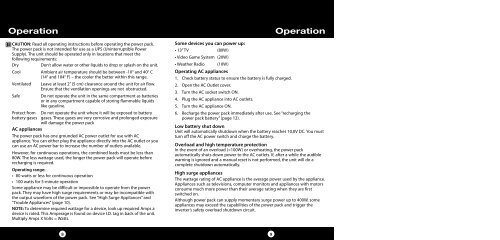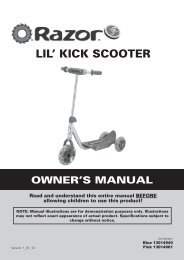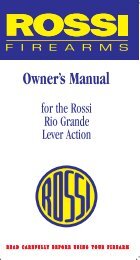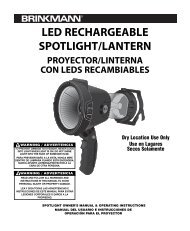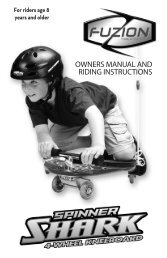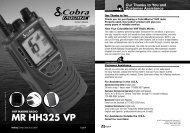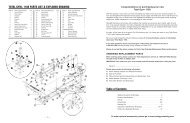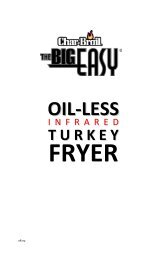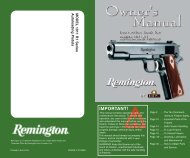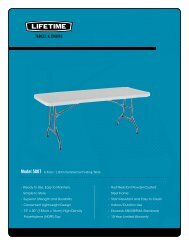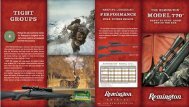Jump Starter/PowerPack With Air Compressor ... - Cobra Electronics
Jump Starter/PowerPack With Air Compressor ... - Cobra Electronics
Jump Starter/PowerPack With Air Compressor ... - Cobra Electronics
You also want an ePaper? Increase the reach of your titles
YUMPU automatically turns print PDFs into web optimized ePapers that Google loves.
Operation<br />
CAUTION: Read all operating instructions before operating the power pack.<br />
The power pack is not intended for use as a UPS (Uninterruptible Power<br />
Supply). The unit should be operated only in locations that meet the<br />
following requirements:<br />
Dry<br />
Don’t allow water or other liquids to drop or splash on the unit.<br />
Cool<br />
Ambient air temperature should be between -10° and 40° C<br />
(14° and 104° F) – the cooler the better within this range.<br />
Ventilated Leave at least 2” (5 cm) clearance around the unit for air flow.<br />
Ensure that the ventilation openings are not obstructed.<br />
Safe<br />
Do not operate the unit in the same compartment as batteries<br />
or in any compartment capable of storing flammable liquids<br />
like gasoline.<br />
Protect from Do not operate the unit where it will be exposed to battery<br />
battery gases gases. These gases are very corrosive and prolonged exposure<br />
will damage the power pack<br />
AC appliances<br />
The power pack has one grounded AC power outlet for use with AC<br />
appliance. You can either plug the appliance directly into the AC outlet or you<br />
can use an AC power bar to increase the number of outlets available.<br />
However, for continuous operations, the combined loads must be less than<br />
80W. The less wattage used, the longer the power pack will operate before<br />
recharging is required.<br />
Operating range:<br />
• 80 watts or less for continuous operation<br />
• 100 watts for 5-minute operation<br />
Some appliance may be difficult or impossible to operate from the power<br />
pack. They may have high surge requirements or may be incompatible with<br />
the output waveform of the power pack. See “High Surge Appliances” and<br />
“Trouble Appliances” (page 10).<br />
NOTE: To determine required wattage for a device, look up required Amps a<br />
device is rated. This Amperage is found on device I.D. tag in back of the unit.<br />
Multiply Amps X Volts = Watts.<br />
Operation<br />
Some devices you can power up:<br />
• 13” TV<br />
(80W)<br />
• Video Game System (20W)<br />
• Weather Radio (10W)<br />
Operating AC appliances<br />
1. Check battery status to ensure the battery is fully charged.<br />
2. Open the AC Outlet cover.<br />
3. Turn the AC socket switch ON.<br />
4. Plug the AC appliance into AC outlets.<br />
5. Turn the AC appliance ON.<br />
6. Recharge the power pack immediately after use. See “recharging the<br />
power pack battery” (page 12).<br />
Low battery shut down<br />
Unit will automatically shutdown when the battery reaches 10.0V DC. You must<br />
turn off the AC power switch and charge the battery.<br />
Overload and high temperature protection<br />
In the event of an overload (>100W) or overheating, the power pack<br />
automatically shuts down power to the AC outlets. If, after a while the audible<br />
warning is ignored and a manual reset is not performed, the unit will do a<br />
complete shutdown automatically.<br />
High surge appliances<br />
The wattage rating of AC appliance is the average power used by the appliance.<br />
Appliances such as televisions, computer monitors and appliances with motors<br />
consume much more power than their average rating when they are first<br />
switched on.<br />
Although power pack can supply momentary surge power up to 400W, some<br />
appliances may exceed the capabilities of the power pack and trigger the<br />
inverter’s safety overload shutdown circuit.<br />
8<br />
9


